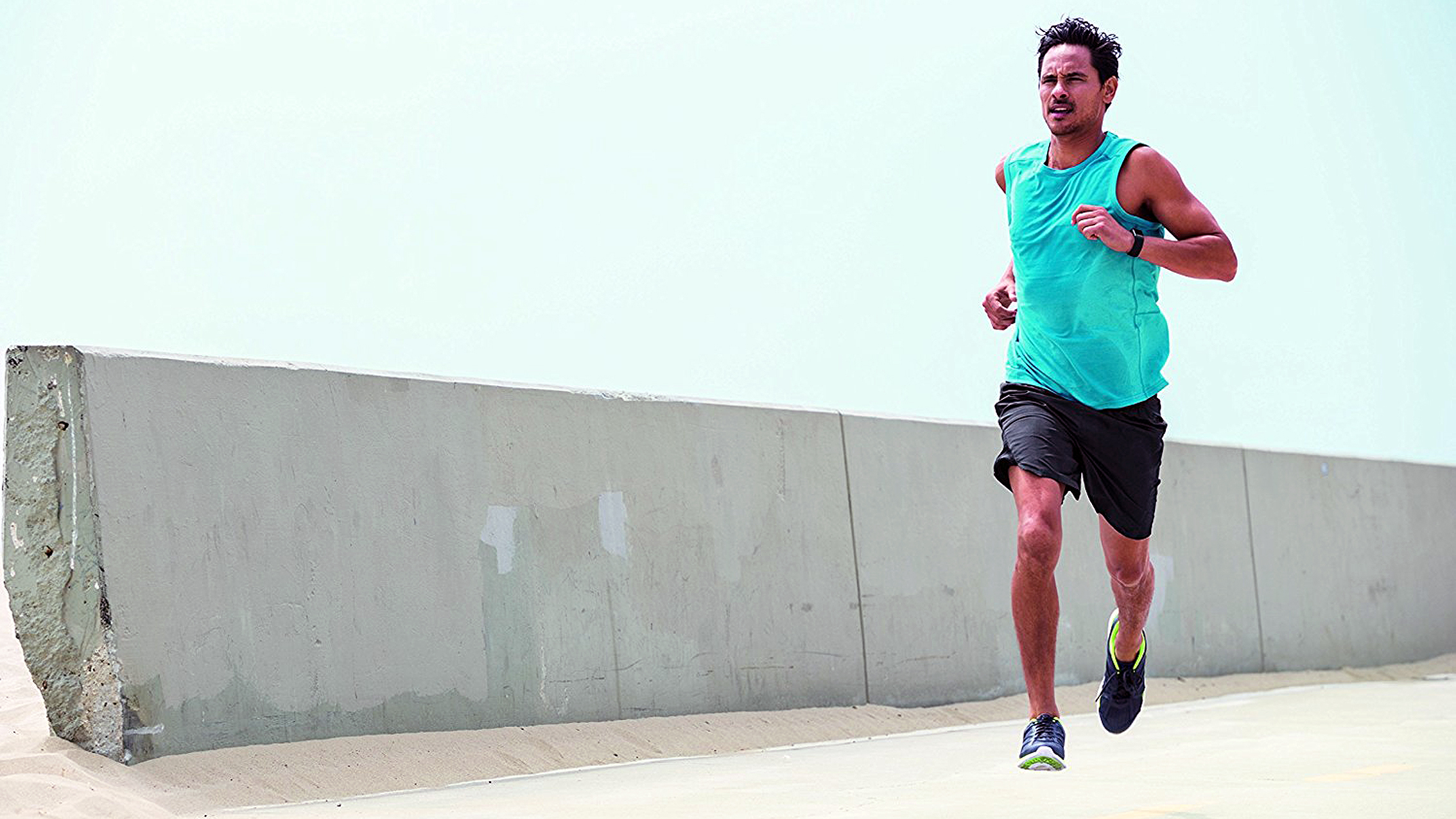

I recently ran the Windsor Half Marathon and apart from it being just a fun thing to do, this was also my first half marathon training where I used a running watch and apps to get ready for the race.
You see, not only haven't I been exposed to high-tech gadgetry to this level before I started working at T3, I'm also one of those people who try to keep tech to a minimal level when I run. Up until recently, the highest tech on me was the pair of running shoes I was wearing (on this occasion I wore the lightweight racer Saucony Type A9) as I most usually don't even listen to music when I run or work out. This was the case up until now, anyway.
For the Windsor Half, I had to get ready in a month's time which is not an issue if you do running races often, but since I haven't done any recently, time was of the essence to get my cardio levels up fast.
Using a running watch taught me a lot about how to train properly and gave me insights about my runs I never had before. With the help of them, I'd like to believe I became a better runner in general. Here's what I learned using running watches and apps for my training.
(Psst, hey! Want to know how to run faster? We'll explain running heart rate zones, VO2 max and lactate threshold)
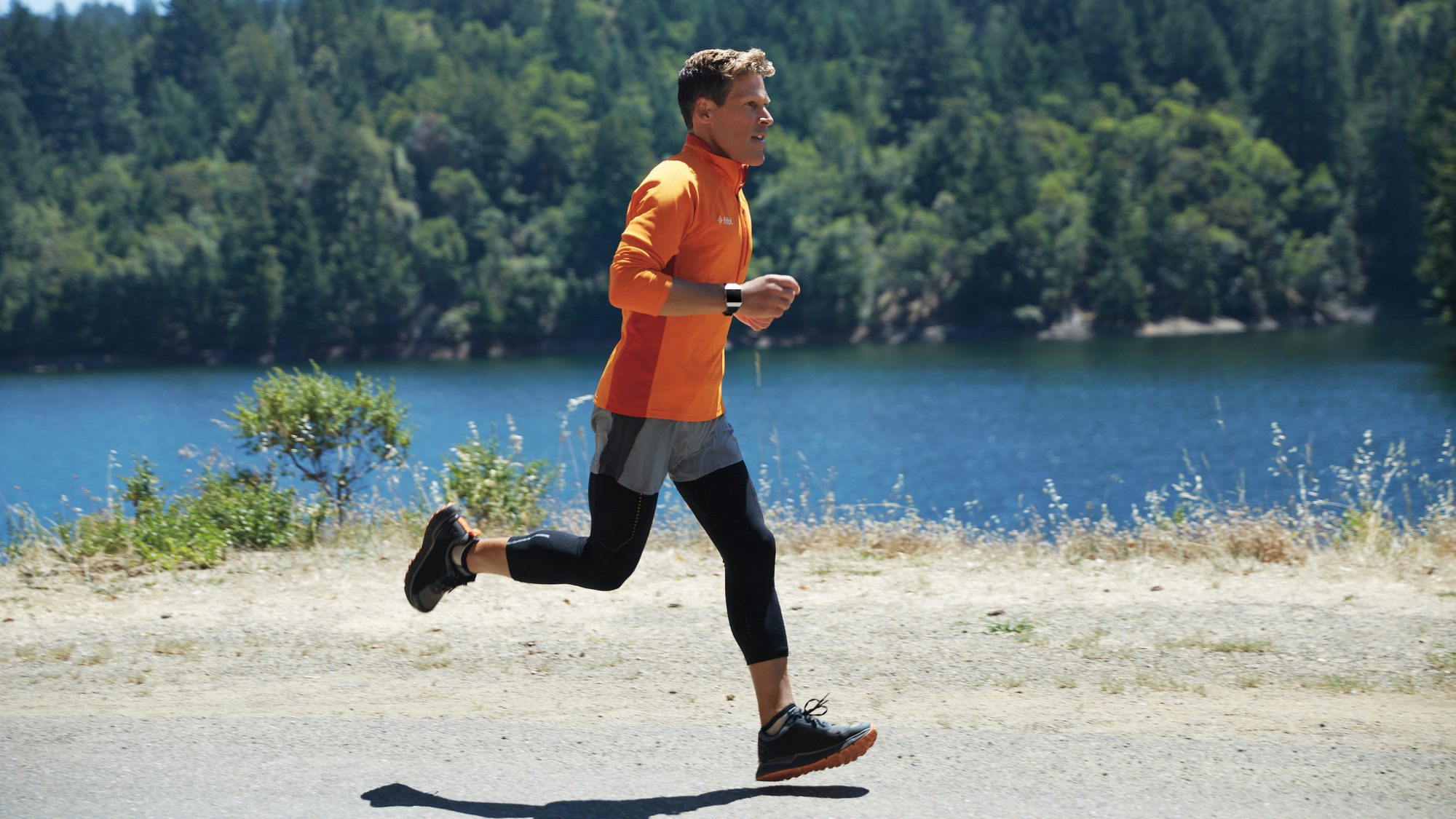
Pace yourself, lad!
1. It's all about that pace, baby
One thing many beginner runners get wrong is pacing themselves on longer runs, mainly because they have no idea what their heart rate is and how fast they are running. Wearing a running watch, even it is just a basic model like the Garmin Forrunner 245, can help you better understand both of those things.
Also, in some Garmin watches, like the Garmin Fenix 6 Pro, there is a feature called PacePro, which will quite literally give you a pace to run with, depending on the overall time you would like to finish the run with on a pre-determined route and the terrain (how steep it ascends/descends).
Sign up to the T3 newsletter for smarter living straight to your inbox
Get all the latest news, reviews, deals and buying guides on gorgeous tech, home and active products from the T3 experts
If you would like to master longer distance running, or even if you just training to run a couch-to-5k, wearing a running watch will make you a more energy efficient runner, quicker (or at least until you can pace yourself better naturally).
- Best running shoes
- Best trail running shoes
- Want to be fit for spring? Here’s why winter training is key to summer success
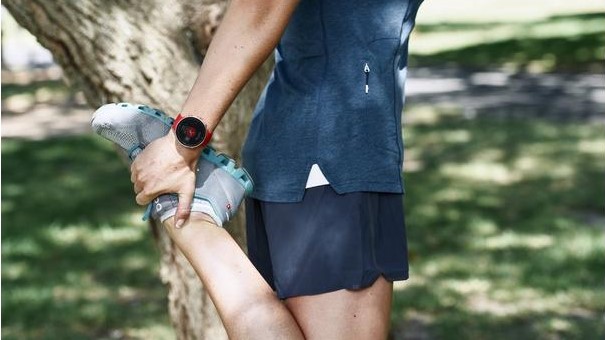
HR tracking on the wrist: yes, please.
2. Wrist-based heart rate is precise enough for most
Running and multi-sport watches measure everything by tracking the movement of your wrist and monitoring health functions on – you guessed it – your wrist. This poses limitations for the technology and this is exactly why a run-of-the-mill fitness tracker, no matter how feature packed something like an Honor Band 5 might be, can't be relied upon to give you accurate readings.
Saying that, more serious devices, like the Garmin Forerunner 945 or the Polar Vantage V, can track heart rate to an adequate level to be helpful for most runners. One thing to keep in mind when measuring HR on your wrist is to wear the smartwatch snugly enough so it can get an accurate reading. Find a balance between cutting blood flow off to your wrist and how you wear your retro Casio watch.
If you feel tired or like you need to stop during your runs, it is most likely because your heart rate is too high. Check the watch and if it is the case (it will be), then slow down to bring the HR down a bit. That's the perfect recipe for running longer distances.
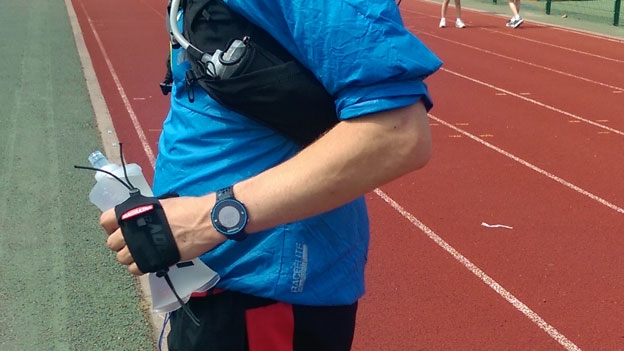
Phone-only GPS is just not good enough
3. Built-in GPS is a must
Before you buy a running watch, make sure it has integrated GPS. More advanced models, like the Suunto 9 Baro, have features like FusedTrack which improves track and distance accuracy without eating up all your battery power. The Garmin Fenix 6 Pro (Garmin Fenix 6 Pro review) uses a GPS+GLONASS system which utilises 24 extra satellites, so the watch can acquire satellites up to 20% faster than devices that rely on GPS alone.
Wrist-based GPS units are not the most precise things in the world but even so, they are more than precise enough to track your movements accurately. You really don't need to know which side of the road you ran on by looking at the maps after your run but by giving you a very close location, running watches will be able to tell you how you improved over time, running the same or similar routes.
More advanced watches have barometers and compasses so they can be used more efficiently for trail running. Some GPS watches have altimeters, too, which can add another layer of data to your runs. Had a slower split? Maybe because you were climbing up a hill.

Knowing how much you need to rest is super important
4. Rest is paramount in getting faster
When you enter your details, running watches can tailor your training and rest based on your training intensity, the amount of sleep you get, your VO2 max levels and so on.
If you are like me, you just want to push yourself as much as possible. But in doing so, you also exhaust your muscles and make your body more prone to injuries.
A running watch – combined with apps like Garmin Connect or Polar Flow – will recommend appropriate amount of rest after exercising and after a short benchmarking period (a week or so), it can also recommend training methods tailored to your capabilities.
By using a running watch, you can build a habit out of running more easily and get ready for races more efficiently. Not many of us are professional runners so we will most likely run in our free time, which we have limited amount of. Running watches will make sure this time is utilised as efficiently as possible and that you are getting enough rest in the process, too.
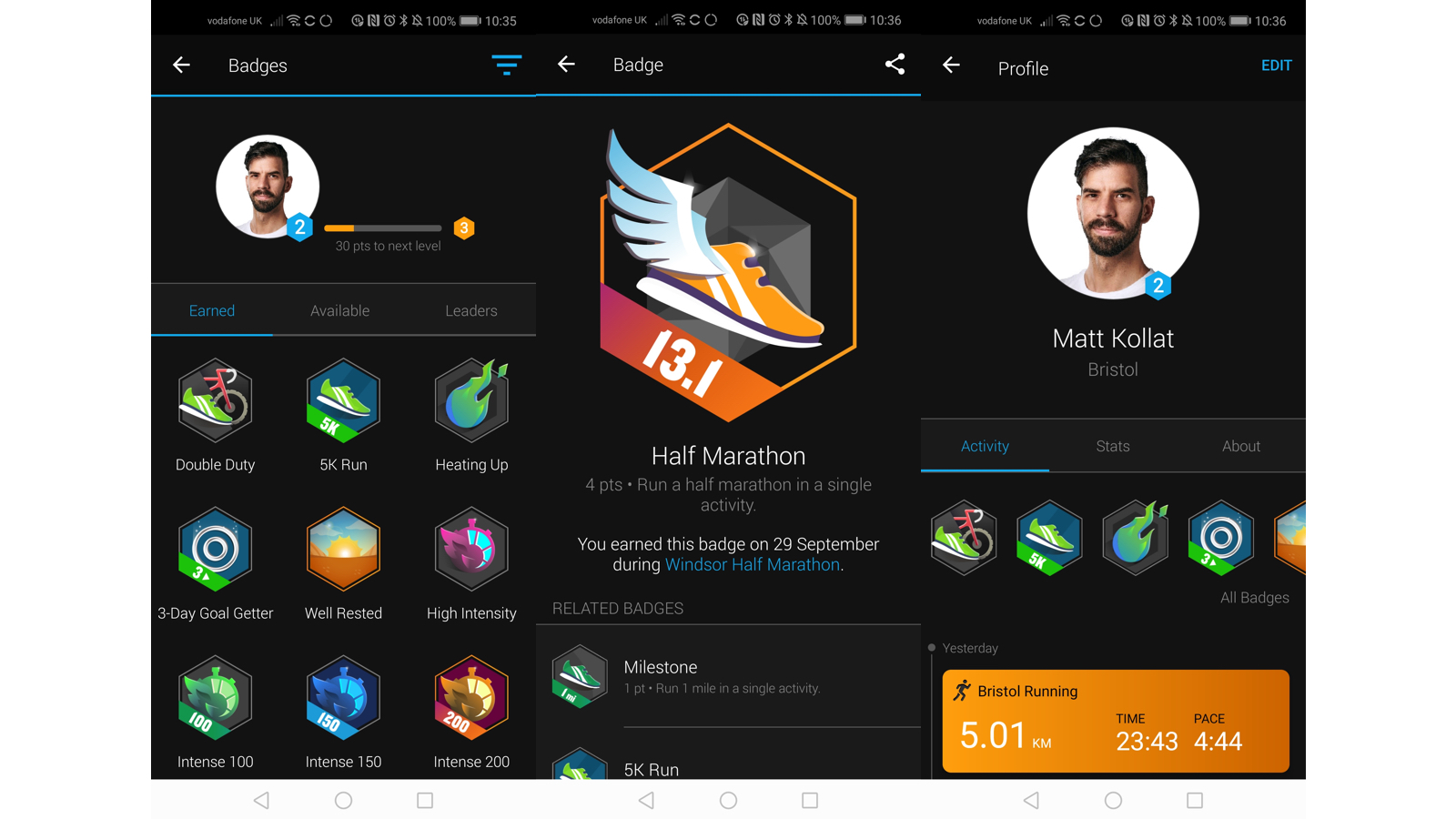
Reward systems like the one found in Garmin Connect can help boost your motivation levels
5. Motivation is key
One thing we often don't see when we train without a running watch is progress. By tracking your runs, you will create a log of previous exercises which you can always refer back to and more importantly, see how much you improved and how much you exercised.
Checking your progress in the accompanying apps has another effect. too: you will want to do more than what you did before. Your brain might forget how much you trained last week/month, but the apps definitely won't. By seeing how less you trained compared to even last week, you will be more inclined to go and run again, just so you can keep your exercise-streak.
The Garmin Connect app also has a badge system which gamifies your efforts. Who doesn't want to level up and collect badges, all for just running around? I would take anything that gets me up off the sofa and outside the door exercising.
Bottom line: get a running watch, sign up a for a race in the near future, and just go out and run. Wearing a running smartwatch will make your running experience more enjoyable and you will more likely to stick with it, too.
Many thanks to Saucony for the invitation to run the Windsor Half Marathon.

Matt Kollat is a journalist and content creator who works for T3.com and its magazine counterpart as an Active Editor. His areas of expertise include wearables, drones, fitness equipment, nutrition and outdoor gear. He joined T3 in 2019. His byline appears in several publications, including Techradar and Fit&Well, and more. Matt also collaborated with other content creators (e.g. Garage Gym Reviews) and judged many awards, such as the European Specialist Sports Nutrition Alliance's ESSNawards. When he isn't working out, running or cycling, you'll find him roaming the countryside and trying out new podcasting and content creation equipment.
-
 3 overrated shoulder exercises, according to a fitness expert (and what to do instead)
3 overrated shoulder exercises, according to a fitness expert (and what to do instead)Sculpt 3D shoulders whilst minimising injury with these three alternative exercises
By Bryony Firth-Bernard Published
-
 Polar’s new subscription feature lands in the shadow of Garmin’s Connect+ rollout
Polar’s new subscription feature lands in the shadow of Garmin’s Connect+ rolloutPR genius or timing disaster? Polar’s new Fitness Programme adds adaptive training to its ecosystem
By Matt Kollat Published